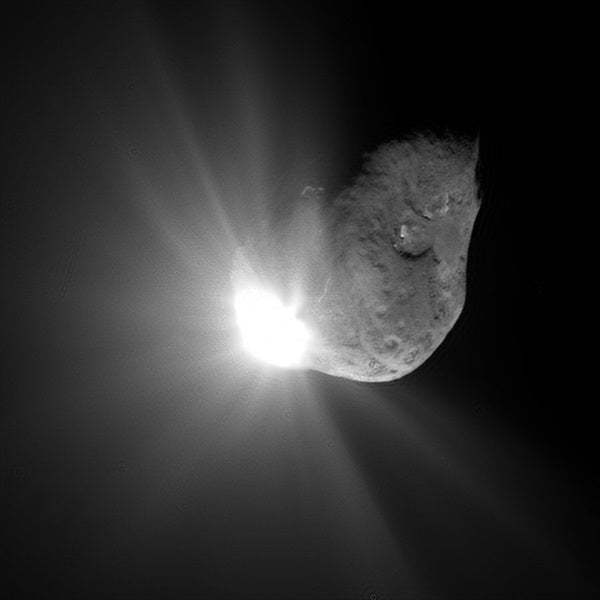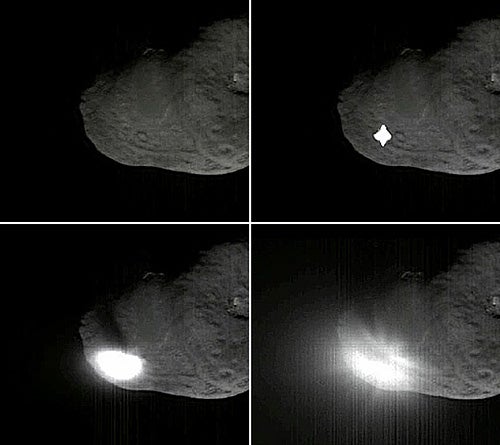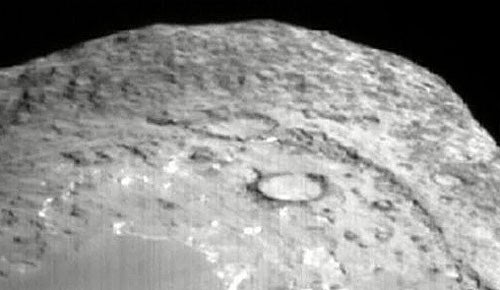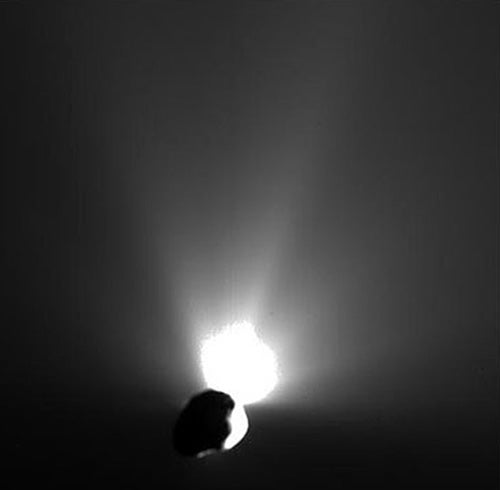At 1:52 a.m. EDT Monday, a washing-machine-size, copper-fortified spacecraft slammed into Comet Tempel 1 at 23,000 mph (37,000 km/h), blasting a crater and creating a bright plume of gas and dust imaged by the Deep Impact mothership.
“I can’t imagine how this could go any better,” says Don Yeomans, an astronomer at the Jet Propulsion Laboratory (JPL) in Pasadena, California, and a member of Deep Impact’s science team. “We’ve gotten all the data we could possibly ask for, and the science team is ecstatic.”
Tempel 1 looks different from both Comet Wild 2, imaged last year by the Stardust probe, and Comet Borrelly, which was visited in 2001 by Deep Space 1. “We don’t understand what this means yet,” says Michael A’Hearn, the mission’s principal investigator. Astronomers had suspected differences between Borrelly and Wild 2 could be explained by their different orbital histories. But, after Deep Impact’s close-up views of Tempel 1, A’Hearn notes, “Something more is going on.”
Confirmation that the impactor struck had to wait until the Deep Impact flyby spacecraft returned post-impact images of the comet. Applause and cheers rippled through JPL mission control when the first image revealed a brilliant fan of gas and dust issuing from the crash site. One unidentified voice called out: “Wow, we really hit that sucker. And we thought this was going to be subtle.”
“It’s clear ejecta was still coming out for several hours after the impact event,” says A’Hearn. “It could go on for weeks.”
The flyby spacecraft caught the initial flash as the impactor slammed into the comet and vaporized itself in a blast equivalent to 4.8 tons of TNT. “At the moment of impact, you heat materials to extremely high temperatures,” explains cratering expert and coinvestigator Peter Schultz of Brown University. Some of this material is hot gas, and some of it is melted droplets of dust from within the crater itself. The material glows so brightly, says Schultz, it acts like a flashbulb and illuminates the scene.
“The impact was bigger than I expected — bigger than most of us expected,” Yeomans says. “Somebody won a fairly large-size pool here.” Predictions ranged from the impactor simply burying itself in a fluffy surface to an explosion large enough to release trapped subsurface gas. “This may be what happened. We just don’t know yet,” he says.
Looking at the flash, the plume of debris, and the plume’s shadow on the comet’s nucleus, Schultz believes he and his students, who have simulated crater-forming processes in the lab, have seen something like it before. “The projectile goes into the surface first, and releases its energy below the surface, and then [the initial plume] comes out the opening. So, it’s like a delayed burst,” he says. “That’s just the first guess.”
Schultz believes the crater, once found, will be on the large side of expectations. “I don’t think it’s house-size,” he says. “I think it’s bigger than that.”
Observatories in space and around the world also studied the event. According to A’Hearn, other teams typically reported the comet brightening by a factor of 4 or 5 within 10 or 15 minutes. Some reported dramatic changes in heat emission and in the abundance of different gases.
The Hubble Space Telescope monitored the comet and returned before-and-after images. An hour after Tempel 1 ran over the impactor, Hubble captured a fan-shape cloud of gas and dust expanding at more than 1,100 mph (1,800 km/h).
The world was watching, too. According to Rick Grammier, the mission’s project manager, NASA’s web site scored 1 billion hits — 2.5 times the number on the Mars’ rovers heaviest-traffic day — and were briefly knocked offline by the demand.
After the crash, the Deep Impact mothership monitored the plume as it approached to within 310 miles (500 km) of the nucleus. The probe survived its close encounter intact and will continue to monitor the comet for the next several days.
Mission planners hope to send Deep Impact past one additional comet — 85P/Boethin. “NASA has agreed to preserve the option of the extended mission, pending further review,” A’Hearn tells Astronomy.
The team will receive a small amount of funding to make a trajectory correction maneuver later this month. This would send Deep Impact toward Earth for a gravity assist that will boost it onto its new target. A’Hearn describes this as “just a stop-gap step with minimal funding” — one that keeps open the possibility of an extended mission.













